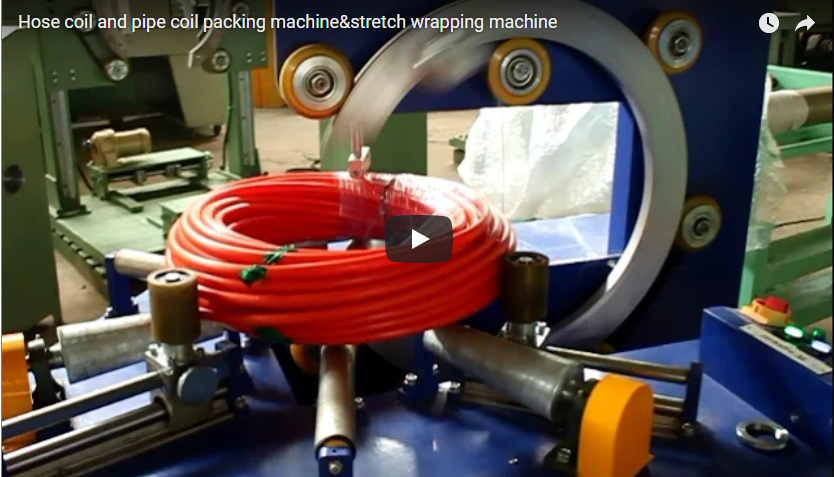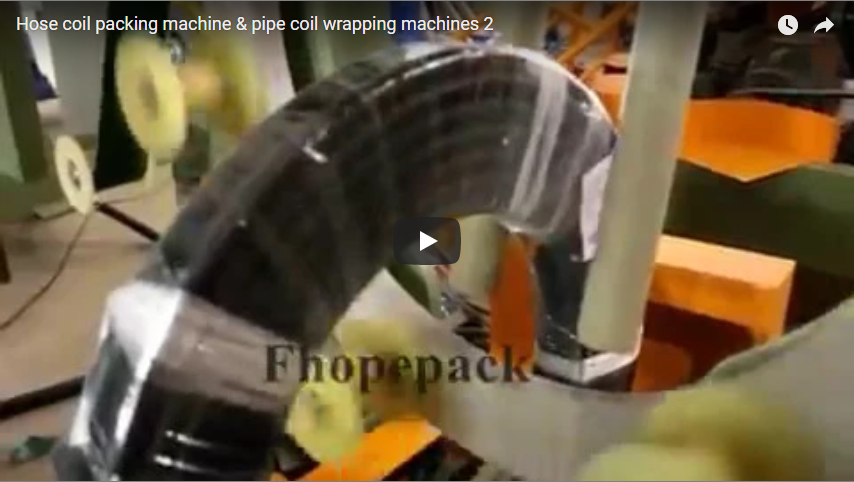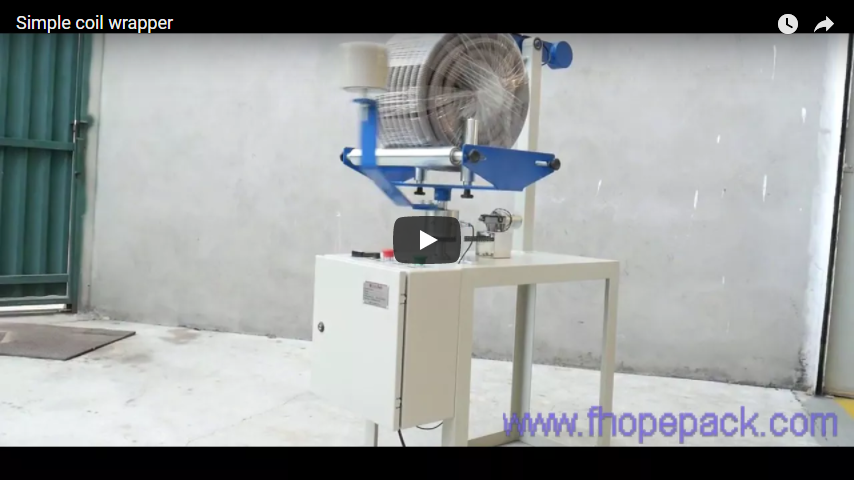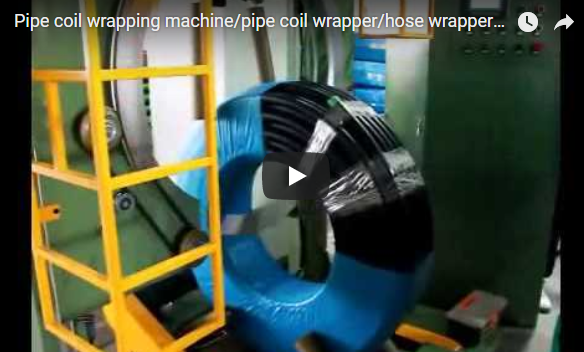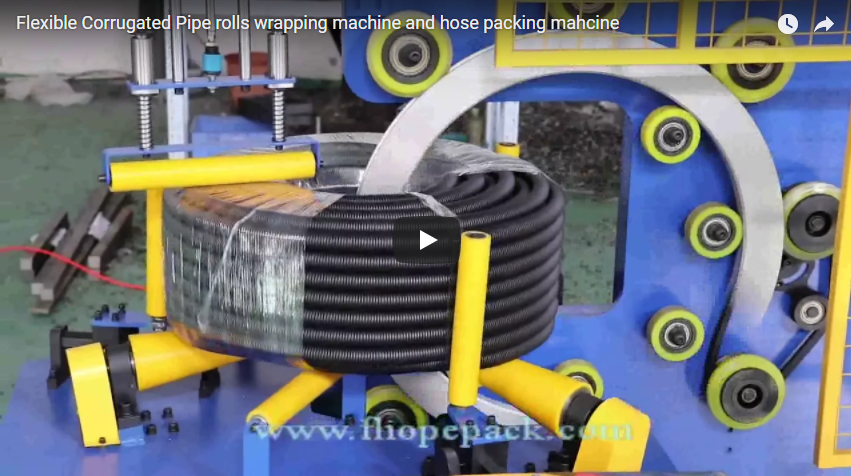Optimizing Coil Packaging: A Deep Dive into the FPH Series Hose and Pipe Wrapping Machine
Manually wrapping coils of hose or pipe is often a time-consuming, labor-intensive process prone to inconsistencies. Achieving a secure, protective wrap that prevents damage during handling and transit, while also being cost-effective, presents a significant challenge for many manufacturers and distributors. Inconsistent tension can lead to loose wraps or crushed products, while excessive material usage inflates packaging costs. This is where automated solutions like the FPH Series Hose Coil Wrapping Machinery offer a compelling advantage.
1. The Challenge: Manual vs. Automated Coil Wrapping
Traditional manual or semi-automatic wrapping methods often struggle with:
- Inconsistent Application: Varying tension and overlap lead to unreliable package integrity.
- High Labor Costs: Significant manual effort is required per coil.
- Material Waste: Difficulty in precisely controlling film/paper usage results in excess consumption.
- Potential for Product Damage: Improper wrapping can fail to adequately protect sensitive hose or pipe materials.
- Slow Throughput: Manual processes inherently limit packaging speed and overall output.
Automated coil wrapping machines directly address these issues, providing a standardized, efficient, and protective packaging solution.
2. Introducing the FPH Series: Precision Wrapping for Hose and Pipe Coils
The FPH series Hose Coil Wrapping Machinery is specifically engineered for packaging small to medium-sized, lighter coils, such as those common for hydraulic hoses, garden hoses, plastic tubing, and smaller diameter pipes. Its design focuses on efficiency, reliability, and ease of use.
2.1 Key Technical Focus Areas (Typical Specifications):
While exact specifications vary by model configuration, typical parameters for the FPH series include:
- Coil Compatibility: Designed for specific ranges of Outer Diameter (OD), Inner Diameter (ID), and Coil Width. (e.g., OD: 300-800mm, ID: 150-500mm, Width: 50-300mm - Note: Actual specs depend on the specific FPH model)
- Wrapping Material: Primarily utilizes LLDPE stretch film, but compatibility with VCI paper or other wrap materials may be available.
- Control System: PLC (Programmable Logic Controller) for reliable automation and parameter setting.
- Wrapping Mode: Vertical ring wrapping operation.
- Automation Level: Often includes automated film clamp, cut, and reset functions.
- Adjustability: Variable ring speed, conveyor speed (if integrated), and adjustable wrapping overlap (e.g., 10%-90%).
2.2 The Vertical Wrapping Advantage
The FPH series employs a vertical wrapping system. This means the wrapping ring operates perpendicular to the floor, and the coil typically rests on driven rollers or a small conveyor section that passes through the ring's center. For lighter, potentially less stable coils, this orientation offers several benefits:
- Stability: The coil is well-supported during the wrapping process.
- Even Application: Ensures consistent film tension and overlap around the entire circumference.
- Compact Footprint: Vertical wrappers can sometimes offer a more space-efficient design compared to horizontal wrappers for certain product types.
2.3 Operational Workflow Example
A typical wrapping cycle involves:
- Loading: The hose or pipe coil is placed onto the machine's infeed rollers/conveyor.
- Initiation: The operator starts the cycle via the control panel or a footswitch.
- Wrapping: The wrapping ring rotates around the coil, dispensing the stretch film (or other material) with precisely controlled tension and overlap. Support rollers rotate the coil as needed to ensure complete coverage.
- Cut and Seal: Upon cycle completion, the machine automatically clamps, cuts, and seals the wrapping material.
- Unloading: The securely wrapped coil is removed from the machine, ready for storage or shipment.
3. Features Enhancing Efficiency and Protection
Modern coil wrappers like the FPH series incorporate features designed to maximize performance:
- Automated Cut & Clamp System: Reduces operator intervention, speeds up the cycle time, and ensures a consistent finish.
- Adjustable Film Overlap: Allows users to fine-tune the amount of wrap overlap via the HMI (Human-Machine Interface), optimizing material consumption based on the required level of protection. More overlap provides greater security but uses more film.
- User-Friendly HMI: Touchscreen interfaces typically allow for easy setup, adjustment of parameters (ring speed, rotation speed, overlap percentage), and diagnostics.
4. A User's Perspective: Transitioning to Automated Coil Wrapping
Making the switch from manual wrapping to a machine like the FPH often yields tangible results quickly. From experience shared by users, common feedback includes:
- Significant Labor Savings: Reducing the manual effort per coil directly translates to lower labor costs or allows personnel reallocation to other value-added tasks. Reductions of 50% or more in wrapping labor time per coil are not uncommon.
- Improved Package Quality & Consistency: Every coil receives the same secure, professional-looking wrap, enhancing brand perception and drastically reducing complaints related to shipping damage.
- Material Cost Reduction: Precise control over film tension and overlap minimizes waste compared to manual application. Optimized stretch film usage can lead to savings of 20-30%.
- Increased Throughput: The automated cycle time is significantly faster and more predictable than manual methods, boosting overall packaging capacity.
- Ease of Operation: Operators typically find the machines straightforward to learn and use, requiring minimal training to achieve proficiency.
5. Integration and Customization Potential
While the standard FPH models cater to common needs, considerations for integration often arise:
- Conveyor Integration: These machines can often be integrated into larger packaging lines with powered infeed and outfeed conveyors for a more seamless workflow.
- Custom Sizing: Modifications to accommodate non-standard coil dimensions may be possible depending on the manufacturer's capabilities.
- Material Options: Discuss specific needs for different wrapping materials (like VCI paper for corrosion protection) with the supplier.
6. Video Demonstration: The FPH Hose Coil Wrapper in Action
See the efficiency and process of the FPH hose coil wrapping machine firsthand:
This video showcases the vertical wrapping operation, demonstrating how the machine securely packages hose coils with stretch film.
7. Conclusion: A Smart Investment in Packaging Efficiency
For businesses dealing with regular volumes of hose or pipe coils, investing in an automated wrapping solution like the FPH Series Hose Coil Wrapping Machinery offers substantial benefits. It moves beyond basic packaging to provide a reliable, cost-effective, and protective method that enhances operational efficiency, reduces costs associated with labor and materials, and ensures products reach their destination in optimal condition. By automating this critical step, companies can improve throughput, consistency, and overall profitability.
For more detailed specifications or to discuss your specific coil packaging requirements:
Contact: info@fhopepack.com
Explore Further: Learn more about Hose Packaging Machines


